This article was medically reviewed by Tu Anh Vu, DMD. Dr. Tu Anh Vu is a board certified dentist who runs her private practice, Tu's Dental, in Brooklyn, New York. Dr. Vu helps adults and kids of all ages get over their anxiety with dental phobia. Dr. Vu has conducted research related to finding the cure for Kaposi Sarcoma cancer and has presented her research at the Hinman Meeting in Memphis. She received her undergraduate degree from Bryn Mawr College and a DMD from the University of Pennsylvania School of Dental Medicine.
There are 9 references cited in this article, which can be found at the bottom of the page.
wikiHow marks an article as reader-approved once it receives enough positive feedback. In this case, several readers have written to tell us that this article was helpful to them, earning it our reader-approved status.
This article has been viewed 95,397 times.
Our teeth are some of our best assets. Keeping them healthy and strong not only helps us keep those assets for our entire lives, but can help prevent many other medical conditions as well. The best way to keep your mouth and teeth strong and healthy is to develop a thorough oral hygiene routine that includes regular brushing and flossing, watching what we put in our mouths, and seeing a dentist on a regular basis.
Steps
Brushing Your Teeth
-
1
-
2Wait at least one hour after eating to brush your teeth. When you eat and drink during a meal, the enamel on your teeth can soften temporarily. Brushing your teeth immediately after a meal means you may accidentally erode your enamel. Instead, wait for about an hour after you’ve eaten before you brush your teeth. This will allow the saliva in your mouth to help neutralize the acid content and return your enamel to its normal strength.[3]Advertisement
-
3Use a soft-bristled toothbrush.[4] While toothbrushes come in variety of bristle stiffness, you should always use a soft or sensitive bristled brush.[5]
- If possible use an electric toothbrush instead of a manual toothbrush.[6] The fast action of an electric toothbrush can actually remove twice as much plaque as manual brushing. Look for a sonic electric toothbrush — the head movement offers the correct movements of the brushing technique and they are more gentle on your teeth.[7]
- Toothbrushes also come in a variety of shapes and sizes. Choose the shape and size that fits best into your mouth and feels comfortable when brushing. The best brush is one that allows you to reach to the very back of your last molar without difficulty.
- Some toothbrushes will come with a tongue scraper which is very useful to remove bacteria on the surface of the tongue. This can be used at the end of your teeth brushing process, thus, preventing bad breath.[8]
-
4Select a toothpaste that’s been approved by the ADA. The American Dental Association (ADA) has a seal of acceptance that can be found on dental products that meet their rigorous standards. When selecting a toothpaste, ensure it has the ADA seal of acceptance on the label. Among other things, the ADA seal of acceptance ensures the toothpaste contains the proper amount of fluoride for certain age groups.[9]
- Look at the back label of the toothpaste and look for calcium carbonate which is an important ingredient to remove bacteria and stains.
- The best toothpastes provide enamel protection which is necessary to combat hypersensitivity due to acids in the body or food.
- Freshness and shiny teeth are desired by the consumers, thus, it's important to choose one that provides long-lasting and consistent results.
- If you do not live in North America, check to see if a national or regional dental organization reviews and provides seals of approval for dental products in your area. Then look for that specific seal on the toothpaste you buy.
-
5Brush your teeth with the proper technique. Brushing your teeth with the proper technique will help ensure removal of the most amount of plaque possible. The back-and-forth technique you see in movies and on TV will actually harm your enamel. The best brushing technique to use is as follows:[10]
- Hold your toothbrush at a 45-degree angle to your gums.
- Move your toothbrush back and forth in short, gentle strokes. Brush each tooth surface 15 times and make sure you count them without applying too much force.
- The best way to clean the chewing surface of the molars (where is the highest risk of decay), is to apply a circular clockwise and anti clockwise movement so bacteria can be eliminated by the centrifugal force.
- Clean the back of your front teeth by placing the brush vertically against the back of your teeth and making up and down strokes with the brush.
- Don’t forget to use your toothbrush to brush the surface of your tongue as well.
-
6
-
7Keep your toothbrush clean. Always rinse off your toothbrush when you’re done brushing and make sure there’s no toothpaste residue left on the brush. Store your toothbrush in a cup or toothbrush holder so that the brush is standing upwards.[13]
- If you’re away on vacation or a business trip, try to store your toothbrush in the same fashion in your hotel (or wherever you’re staying). It’s not a good idea to keep a toothbrush cooped up inside a toothbrush holder longer than absolutely necessary.
-
8Replace your toothbrush every three to four months. At the very least you should replace your toothbrush, or electric toothbrush head, every three to four months. If the toothbrush looks like it’s damaged or worn, replace it sooner than three months.[14]
Flossing Between Your Teeth
-
1Floss your teeth at least once a day.[15] An awesome oral hygiene routine includes flossing your teeth once a day. Dentist’s recommend you floss in the evening, before bed, as this will help to remove any food residue before it has a chance to sit on or between your teeth all night.[16]
- While most people tend to floss after they’ve brushed, it is actually recommended that you try flossing before you brush. This helps to remove food particles stuck between your teeth and gums and then allows those areas of your mouth to be cleaned more effectively when you brush.[17]
- Flossing is a good way to end your teeth brushing process by removing anything that is still stuck in between your teeth. It can also prevent gum disease.
- Pick a floss that has the right thickness for the spaces between your teeth.
- Make sure that the floss is ADA-approved.
-
2Use at least 18 in of floss. When pulling off a strand of floss from the roll, take about 18 in or 46 cm. Roll one end of the floss around the middle finger on your right hand, and roll the other end of the floss around the middle finger of your left hand. Leave enough floss between your middle fingers so you’re able to grab the floss using your thumbs and index fingers on both hands.[18]
-
3Be gentle while flossing your teeth.[19] While you want to hold the floss between your hands tightly, you want to be as gentle as possible when you’re actually flossing. The floss should be used to rub your tooth up and down while it’s in-between two teeth. You should also attempt to curve the floss around the tooth for better results.[20]
- As you move through your mouth, unwind one end of the floss and wind the opposite end, so you have fresh floss every one to two teeth.
-
4Try an alternative to floss if you have trouble. There are several alternative tools that can be used in place of floss, if you find it difficult to use floss. Floss picks have floss mounted between two ends so you don’t have to wind and unwind floss yourself. They also have an easy-to-grip handle to manipulate the pick between your teeth. There are also electric flossing machines that spray a jet of water that can be used to clean between your tooth (sometimes referred to as a WaterPik).[21]
Keeping Your Mouth Healthy
-
1Rinse your mouth with a mouthwash or mouth rinse. Consider using an antimicrobial mouth rinse or a fluoride-based mouthwash everyday. You can use the rinse/wash each time you brush, but you can also use it between brushing to keep your mouth fresh.[22]
- If you don’t like the idea of bringing a toothbrush and toothpaste to school or work with you, you can always bring a small jar of rinse/wash instead to use after a meal.
-
2Chew sugar-free gum. Chewing sugar-free gum throughout the day, specifically after a meal, can help protect your teeth. Chewing gum generates more saliva in your mouth, which in turn can balance the level of acidity. Plus, chewing gum can clean the plaque off your teeth, which will help prevent decay and erosion.[23]
- Look for sugar-free gum that contains xylitol, as it helps maintain an neutral Ph balance in your mouth.
- Note that some people with jaw issues (such as TMJ) may be advised not to chew gum as it will cause more problems than it will solve. If you have been diagnosed with a jaw issue, ask your dentist if you should be chewing gum.
-
3Reduce the amount of sugar you eat and drink. Sugar can be very hard on teeth. Sugar can cause or worsen tooth decay, which in turn can lead to cavities. Reducing the amount of sugary food and drinks you consume will help keep your teeth healthy in the long-term.[24]
- Keep in mind that this includes the sugar you put into items such as coffee, tea, lemonade, iced tea, and other drink mixes.
-
4Be careful of how much acidic foods and drinks you consume. Foods and drinks that have a high acidic value can also have a damaging effect on your teeth by eroding the enamel. Enamel protects protects the dentin, which contains the pulp with the nerves and blood vessels of your teeth. Without enamel you’ll find yourself becoming very sensitive to hot and cold foods and drinks and you’ll also likely experience pain. Reducing or eliminating acidic foods and drinks will help to protect your enamel and keep your teeth healthy and strong.[25]
- If you are drinking an acidic beverage, try drinking it with a straw. This methods help prevent the drink — and therefore the acid — from actually touching your teeth.
-
5Stop smoking. Smoking is terrible on your mouth. In addition to giving you bad breath and stained teeth, smoking can also increase your chances of losing your teeth and getting mouth cancer. If you currently smoke, seriously consider quitting. If you do not smoke, don’t start. Quitting smoking can also have positive benefits on your overall health and wellbeing, not to mention your pocketbook.[26]
-
6Avoid other bad oral habits to keep your mouth strong and healthy. There are several things you may do on a regular basis that have become habits, but are actually quite bad for your teeth and mouth. Reducing the amount of time you use the habit, or eliminating it altogether, will significantly help keep your mouth healthy and strong. The following bad habits should be avoided:[27]
- Biting your nails.
- Brushing too hard or with a hard-bristled toothbrush. Massage, don’t scrub, your teeth when you brush.
- Grinding or clenching your teeth. If you happen to do this while you sleep, ask your dentist about a mouthguard.
- Chewing ice cubes.
- Using your teeth as tools! This includes using your teeth to rip tape or open a plastic package. Use scissors instead.
Seeing Your Dentist
-
1Schedule annual dental cleanings. Ideally you should have a professional cleaning and dental exam at least once a year, however some dentists (and insurance plans) may suggest as often as every six months. A professional cleaning will allow a dentist or dental hygienist to scrape off all the built-up plaque and tartar on your teeth that you are not able to remove with brushing or flossing. X-rays are often taken at annual dental exams in order to allow the dentist to determine if you have any cavities or other issues.[28]
- You may need to get your teeth cleaned more than once a year depending on the condition of your teeth and gums. Some people need to get cleanings every 3 months or so![29]
-
2See a dentist immediately if you experience problems. If you find yourself experiencing any of the following problems, make an appointment to see your dentist right away. Many of these issues are symptoms for much more serious dental problems which, if caught early, may be simple to fix. If your dentist is already aware of these issues from an annual exam, follow their instructions as to how to handle the problem.[30]
- Very red, swollen and tender gums.
- Gums that bleed a lot when you brush or floss.
- Gums that appear to be pulling away from your teeth (it looks like your teeth are getting bigger).
- Gums that seem to grow bigger and wider, slowly covering the surface of your teeth.
- Loose teeth (other than baby teeth).
- Changes in your bite — the way your top and bottom teeth align.
- Very high sensitivity to heat or cold.
- Constant bad breath or bad taste in your mouth.
-
3Get a fluoride treatment.[31] Fluoride can help prevent tooth decay and, therefore, cavities. Fluoride is normally found in toothpastes and mouthwashes, but can also be applied as a varnish or treatment at your dentist’s office. Annual fluoride treatments are normally recommended for children and teenagers, but adults can also benefit.[32]
- Many cities throughout North America add fluoride to their drinking water, which is for your teeth. Check with your city to determine if fluoride is added to the water where you live.
Expert Q&A
-
QuestionWhat type of toothpaste should I use?
 Joseph Whitehouse, MA, DDSDr. Joseph Whitehouse is a board certified Dentist and the Former President of the World Congress on Minimally Invasive Dentistry (WCMID). Based in Castro Valley, California, Dr. Whitehouse has over 46 years of dental experience and counseling experience. He has held fellowships with the International Congress of Oral Implantology and with the WCMID. Published over 20 times in medical journals, Dr. Whitehouse's research is focused on mitigating fear and apprehension patients associate with dental care. Dr. Whitehouse earned a DDS from the University of Iowa in 1970. He also earned an MA in Counseling Psychology from California State University Hayward in 1988.
Joseph Whitehouse, MA, DDSDr. Joseph Whitehouse is a board certified Dentist and the Former President of the World Congress on Minimally Invasive Dentistry (WCMID). Based in Castro Valley, California, Dr. Whitehouse has over 46 years of dental experience and counseling experience. He has held fellowships with the International Congress of Oral Implantology and with the WCMID. Published over 20 times in medical journals, Dr. Whitehouse's research is focused on mitigating fear and apprehension patients associate with dental care. Dr. Whitehouse earned a DDS from the University of Iowa in 1970. He also earned an MA in Counseling Psychology from California State University Hayward in 1988.
Board Certified Dentist Anything that is fluoridated is going to be good for your mouth. There's an amazing amount of proof that once fluoride gets into the hydroxyapatite, which makes up the enamel, it's a lot harder for acid to damage the teeth. So when your teeth lose their strength over time, the fluoride in your toothpaste can help keep your teeth safe.
Anything that is fluoridated is going to be good for your mouth. There's an amazing amount of proof that once fluoride gets into the hydroxyapatite, which makes up the enamel, it's a lot harder for acid to damage the teeth. So when your teeth lose their strength over time, the fluoride in your toothpaste can help keep your teeth safe.
References
- ↑ Tu Anh Vu, DMD. Board Certified Dentist. Expert Interview. 10 April 2020.
- ↑ http://www.mayoclinic.org/healthy-lifestyle/adult-health/in-depth/dental/art-20045536
- ↑ https://www.dentalhealth.org/tell-me-about/topic/caring-for-teeth/preventive-care-and-oral-hygiene
- ↑ Tu Anh Vu, DMD. Board Certified Dentist. Expert Interview. 10 April 2020.
- ↑ http://www.mayoclinic.org/healthy-lifestyle/adult-health/in-depth/dental/art-20045536
- ↑ Tu Anh Vu, DMD. Board Certified Dentist. Expert Interview. 10 April 2020.
- ↑ https://www.dentalhealth.org/tell-me-about/topic/caring-for-teeth/preventive-care-and-oral-hygiene
- ↑ http://www.mouthhealthy.org/en/az-topics/b/brushing-your-teeth
- ↑ Joseph Whitehouse, MA, DDS. Board Certified Dentist. Expert Interview. 9 April 2020.
- ↑ http://www.ada.org/~/media/ADA/Science%20and%20Research/Files/watch_materials_brush.ashx
- ↑ Tu Anh Vu, DMD. Board Certified Dentist. Expert Interview. 10 April 2020.
- ↑ http://www.mouthhealthy.org/en/az-topics/b/brushing-your-teeth
- ↑ http://www.mayoclinic.org/healthy-lifestyle/adult-health/in-depth/dental/art-20045536
- ↑ http://www.mayoclinic.org/healthy-lifestyle/adult-health/in-depth/dental/art-20045536
- ↑ Tu Anh Vu, DMD. Board Certified Dentist. Expert Interview. 10 April 2020.
- ↑ http://www.mayoclinic.org/healthy-lifestyle/adult-health/in-depth/dental/art-20045536
- ↑ http://www.colgate.com/en/us/oc/oral-health/conditions/gum-disease/article/gingivitis
- ↑ http://www.mayoclinic.org/healthy-lifestyle/adult-health/in-depth/dental/art-20045536
- ↑ Tu Anh Vu, DMD. Board Certified Dentist. Expert Interview. 10 April 2020.
- ↑ http://www.mayoclinic.org/healthy-lifestyle/adult-health/in-depth/dental/art-20045536
- ↑ http://www.mayoclinic.org/healthy-lifestyle/adult-health/in-depth/dental/art-20045536
- ↑ http://www.mayoclinic.org/healthy-lifestyle/adult-health/in-depth/dental/art-20045536?pg=2
- ↑ https://www.dentalhealth.org/tell-me-about/topic/caring-for-teeth/preventive-care-and-oral-hygiene
- ↑ Joseph Whitehouse, MA, DDS. Board Certified Dentist. Expert Interview. 9 April 2020.
- ↑ https://www.dentalhealth.org/tell-me-about/topic/caring-for-teeth/preventive-care-and-oral-hygiene
- ↑ Joseph Whitehouse, MA, DDS. Board Certified Dentist. Expert Interview. 9 April 2020.
- ↑ http://www.mouthhealthy.org/en/bad-habits/?content=newyears&medium=topstories&source=mh/
- ↑ http://www.mayoclinic.org/healthy-lifestyle/adult-health/in-depth/dental/art-20045536?pg=2
- ↑ Joseph Whitehouse, MA, DDS. Board Certified Dentist. Expert Interview. 9 April 2020.
- ↑ http://www.mayoclinic.org/healthy-lifestyle/adult-health/in-depth/dental/art-20045536?pg=2
- ↑ Tu Anh Vu, DMD. Board Certified Dentist. Expert Interview. 10 April 2020.
- ↑ https://www.dentalhealth.org/tell-me-about/topic/caring-for-teeth/preventive-care-and-oral-hygiene
About This Article
The best way to keep your teeth healthy is to brush them for two full minutes at least twice every day. When you brush, hold your toothbrush at a 45-degree angle to your gums and move it back and forth in short, gentle strokes over each tooth. Remember to include your upper and lower teeth on both sides, and make sure you reach your back teeth. To keep your toothbrush clean, rinse it fully after each use, and replace it every 3-4 months. Additionally, floss your teeth at least once each day with dental floss or a water flosser. For extra protection, chew sugar-free gum with xylitol throughout the day. For more information from our Medical co-author, like how to get a fluoride treatment, keep reading!


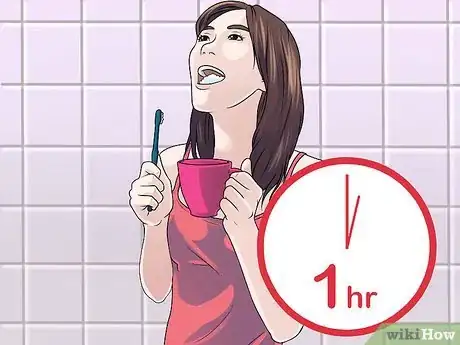
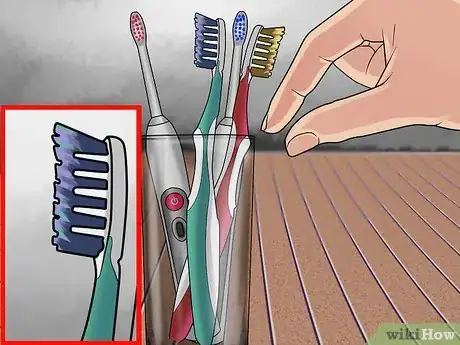
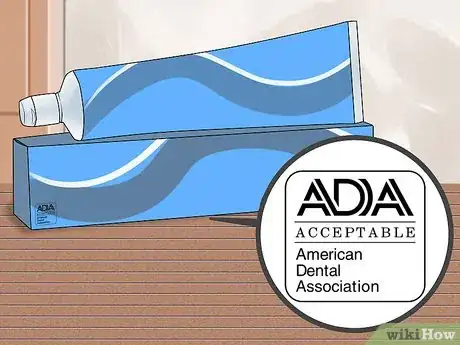

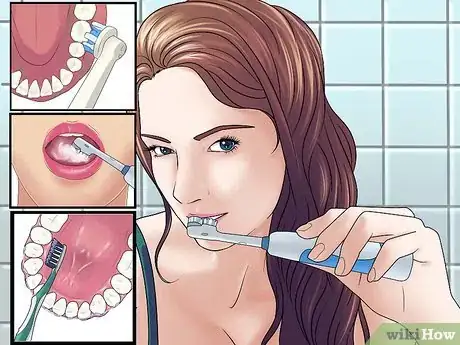
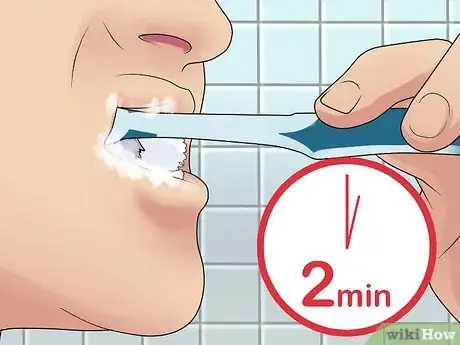
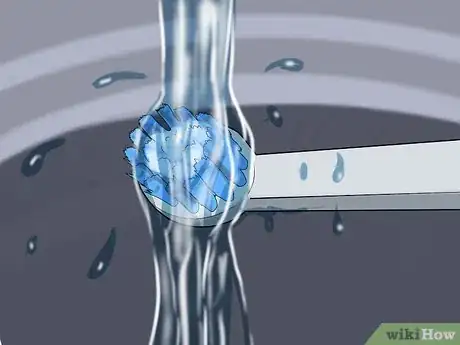
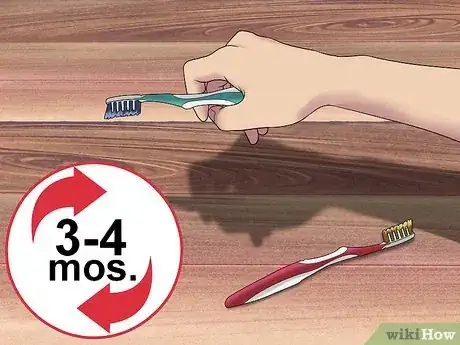

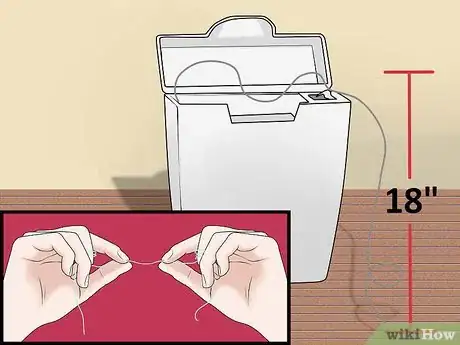
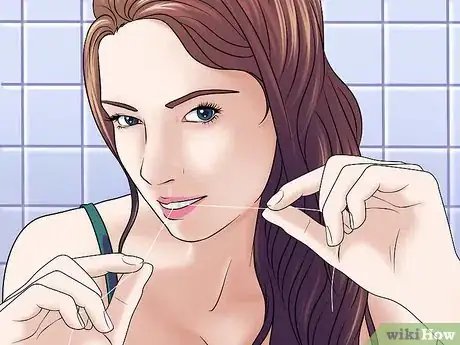
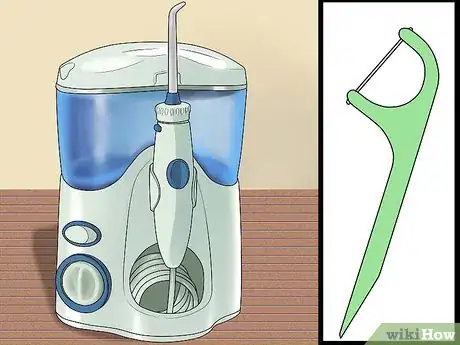
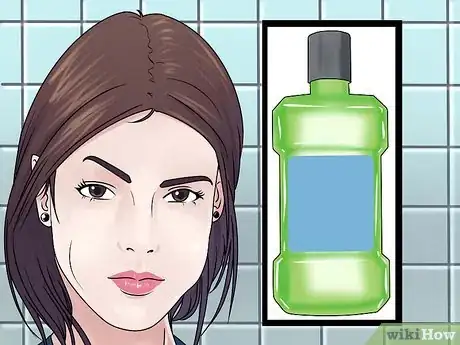
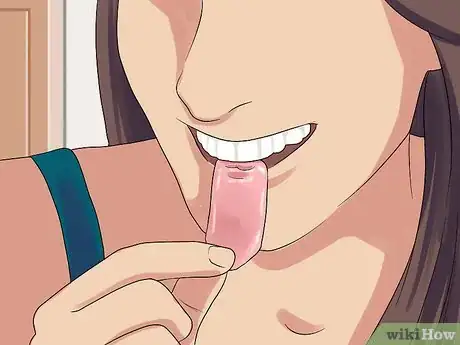


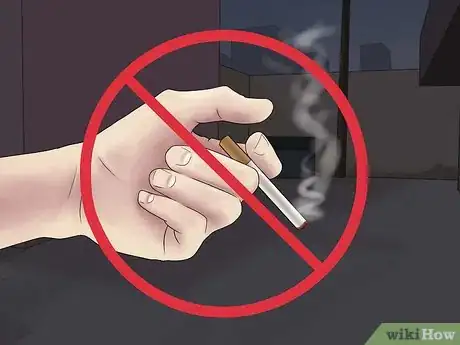
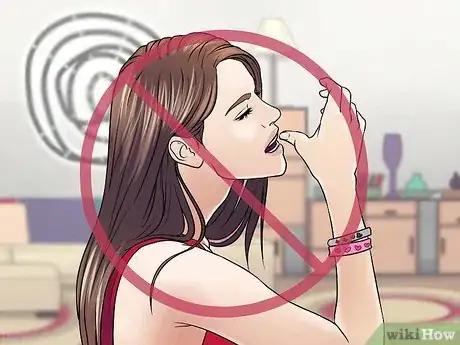
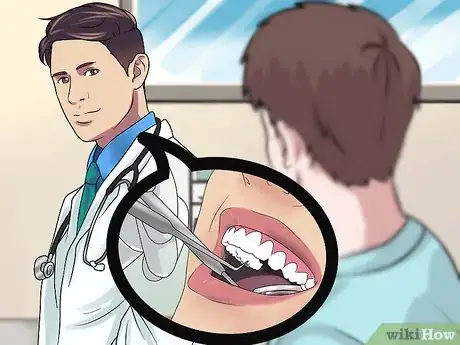
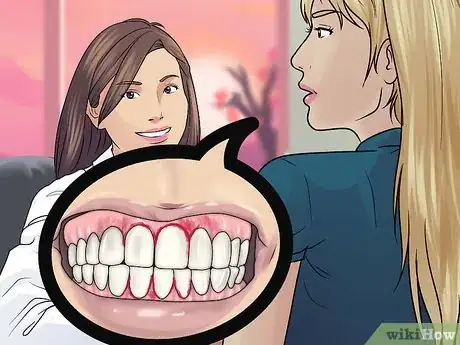

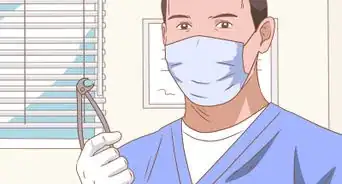
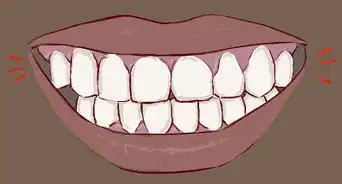


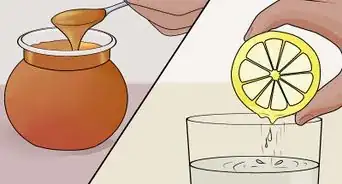

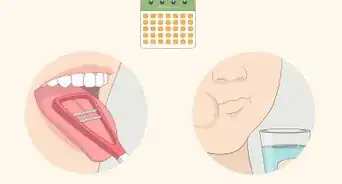

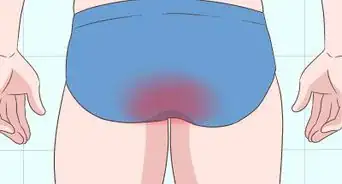
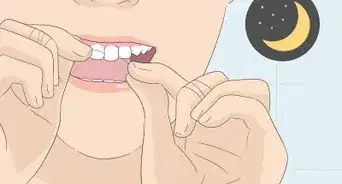
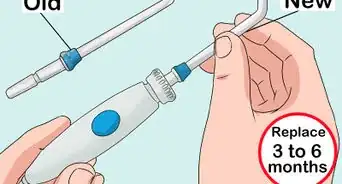

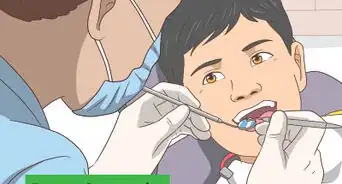
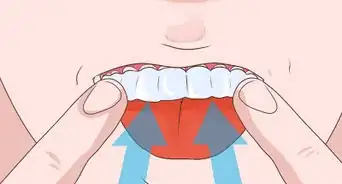









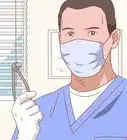


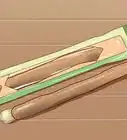




































Medical Disclaimer
The content of this article is not intended to be a substitute for professional medical advice, examination, diagnosis, or treatment. You should always contact your doctor or other qualified healthcare professional before starting, changing, or stopping any kind of health treatment.
Read More...